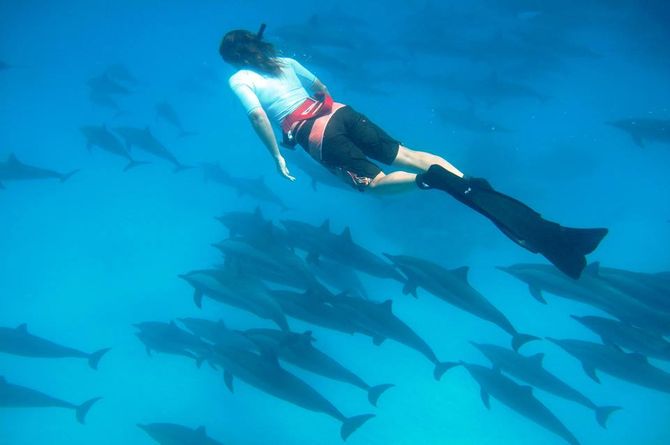Red Sea Dolphin Project gets wet and wild
June saw the start of the field trip element of the all important Red Sea Dolphin Project. The dedicated marine biology specialists based with HEPCA plus a team of enthusiastic volunteers are currently covering the Red Sea from Marsa Alam down to Egypt’s southern borders. The project in conjunction with EarthWatch runs 4 trips over 40 days with a changeover of participants. The purpose is to monitor the cetacean (dolphins and whales) population and to document bird sightings. Each member of the team, specialists and volunteers alike, is involved in every aspect of the process – from the sky deck observers spotting dolphins and reporting distance and position, to the sundeck observers noting species, size and activity of the bird population and also recording in-water sightings of cetaceans close to the boat as well as the more commonly spotted flying fish and jelly fish. There are also “indoor” jobs – “Alpha” monitoring acoustics, and “Bravo” handling data input from information fed in from all observers and information sources around the boat. Wave size and wind speed and direction are all noted. The team is working from dawn til dusk performing a pattern of transits – each one taking 2-3 hours. During bad weather the transit style recording process is not possible so the team will move to somewhere more sheltered and both snorkeling and from the boat will observe behaviour and conduct photo ID programmes. Coral bleaching assessment is also carried out during these periods. It is a fascinating project and a fantastic opportunity for all involved to observe and interact with these amazing creatures. The highlights of this trip so far have been the sightings of the young of 4 species including spinner, pantropical spotted, indo-pacific and common bottlenose dolphins. Top of the “special” list was the sighting of a mother false killer whale and her newborn calf.



